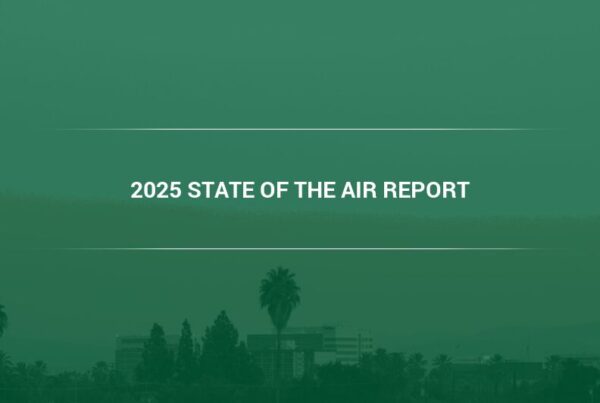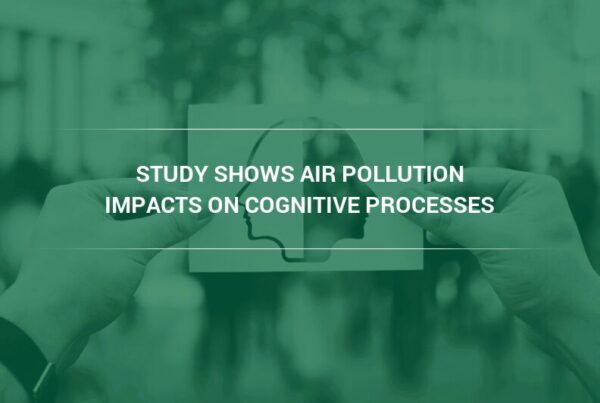Air pollution leads to environmental damage, but it can also harm the health of people. Some of the most common ailments in the world are diseases caused by air pollution. Air pollution can cause respiratory diseases, due to the pollutants people breathe in, yet it can also impact other areas of the body as well, like people’s hearts. What are the most common diseases caused by air pollution? How can air pollution be reduced to protect people from these diseases?
Most Common Diseases Caused By Air Pollution
Diseases caused by air pollutants kill and hospitalize millions of people every year. Estimates by the World Health Organization imply that one out of every eight deaths in the world is due to conditions associated with air pollution. New research has established stronger links between both outdoor and indoor air pollution and the development of respiratory and cardiovascular diseases. The most common diseases caused by air pollution include ischemic heart disease, stroke, chronic obstructive pulmonary disease (COPD), lung cancer and acute lower respiratory infections in children.
“Ischemic heart disease, or coronary heart disease, is linked with the buildup of calcium or other materials like fat within the coronary artery,” explains says Kevin Wood, Vice President Sales & Marketing at Camfil USA. “This leads to blockages which prevent blood from reaching the heart and other areas of the body. Recent research indicates that air pollution accelerates the blockage of arteries, leading to increased incidences of ischemic heart disease.” (1)
Particulate air pollution has been linked with strokes, which occur when the blood supply to the brain is cut-off. Strokes can easily lead to brain damage or death.
COPD refers to not a single disease, but multiple diseases which make it difficult to breathe. These diseases include bronchitis and emphysema, and both conditions can be caused by damage to the lungs from air pollutants.
Lung cancer is the uncontrolled division of cells within the lungs, and it is associated with air pollutants, especially particulate matter pollution, and secondhand smoke.
Lower respiratory infections often manifest as pneumonia, though they can show up as other ailments as well. Children are especially vulnerable to developing acute lower respiratory tract infections because their bodies and lungs are still developing, and emissions of soot and other pollutants hit them harder than adults.
Air Pollutants That Cause Disease
The air pollutants that cause disease include what the EPA has categorized as “Criteria Air Pollutants.” These are the air pollutants that are the most abundant in the atmosphere, and consequently, they do the most damage to human health. These air pollutants have been singled out by the EPA as needing special attention to keep their levels within acceptable limits. The criteria air pollutants include Lead, Ozone, Particulate Matter, Nitrogen Dioxide, Carbon Monoxide, and Sulfur Dioxide.
Lead used to be ubiquitous in the air, but since the passing of the Clean Air Act levels of lead in the air have declined by 98%, at least in the U.S. Lead can damage the nervous system, kidneys, and brain.
Particulate matter pollution is one of the main sources of the various diseases associated with air pollution. Particulate matter refers to tiny particles, both liquids, and solids, which exist in the air. The particles are so small they can penetrate both the lungs and bloodstream and do considerable damage. Particulate matter can come from a variety of sources, but the combustion of fossil fuels is one of the primary contributors to particulate matter air pollution.
“Ozone is a beneficial chemical when it is located in the upper atmosphere, as it protects the Earth from the sun’s ultraviolet radiation,” says Wood. “When ozone is at ground level it is a toxic pollutant and one of the key ingredients of smog. Ozone is often formed by the interaction of Volatile Organic Compounds (VOCs) with sunlight and heat.” (2)
Sulfur dioxide and nitrogen dioxide are colorless gases released by the combustion of fossil fuels, or by industrial processes. Both chemicals can damage the lungs and airway, leading to the exacerbation of cardiovascular diseases in those with pre-existing conditions. Nitrogen dioxide is also thought to be one of the causes of asthma.
“Carbon monoxide is a colorless and odorless gas that comes from the incomplete burning of fossil fuels,” says Wood. “Frequently released by cars and industrial facilities, carbon monoxide prevents people from getting oxygen, so it can lead to confusion, nausea and even death rather quickly.” (3)
Risk Factors for Air Pollution Diseases
“Risk factors for air pollution diseases include lifestyle habits and geographical location. Both indoor and outdoor air pollutants harm people,” explains Wood. “Exposure to indoor air pollutants often comes from using coal, wood, or biomass to cook food. According to WHO estimates, many of the 4.3 million deaths that occurred due to air pollution in 2012 were linked to cooking with dirty fuels.” (4)
Outdoor air pollution levels are worse in areas of the world that are undergoing rapid industrialization. Industrializing nations often have fewer regulations on emissions. Massive population centers with unsustainable emissions policies are the highest risk areas to live.
Stopping Diseases Caused by Air Pollution
Stopping diseases caused by air pollution means implementing smart control strategies, such as instituting emissions standards and creating technology that will reduce emissions.
The EPA recommends source control as one of the best strategies to reduce air pollution. Source control involves stopping pollution at its source by doing things like improving the efficiency of industrial processes and using less polluting fuels.
“Employing technology that reduces emissions is another way to improve overall air quality,” says Wood. “Scrubbers on smokestacks, filters, electrostatic precipitators, and mechanical collectors on tailpipes are all ways of limiting air pollution through technological innovation. Innovations in clean air technology can be combined with economic incentives, like emissions trading and emissions caps. This encourages companies to adopt clean energy technology.” (5)
Implementing emissions limiting strategies will usually also benefit the economy, as the society will have to spend less money on healthcare costs associated with diseases caused by air pollution.
The diseases caused by air pollution lead to shorter lives and they make those lives unhappier and tougher in the meantime. For these reasons, we should do all we can to reduce air pollution and stop the diseases associated with them.
When geographic conditions dictate poor air quality because of the proximity of pollution produced by factories or other contributors, building owners can address building occupant concerns by ensuring quality, high-efficiency air filters are used in the HVAC systems. Air filters can handle particles down to sub-micron size and even ozone, the main culprit in areas of susceptible to periodic high smog levels.
Camfil provides high-quality filter solutions that will protect you from air pollutants and the diseases caused by air pollution. Be proactive about ensuring your health and contact Camfil USA distributor near you today.
SOURCES
http://www.who.int/respiratory/copd/causes/en/
http://www.health.nsw.gov.au/environment/air/Pages/ozone.aspx
http://www.health.nsw.gov.au/environment/air/Pages/carbon-monoxide.aspx
http://www.who.int/mediacentre/news/releases/2014/air-pollution/en/



